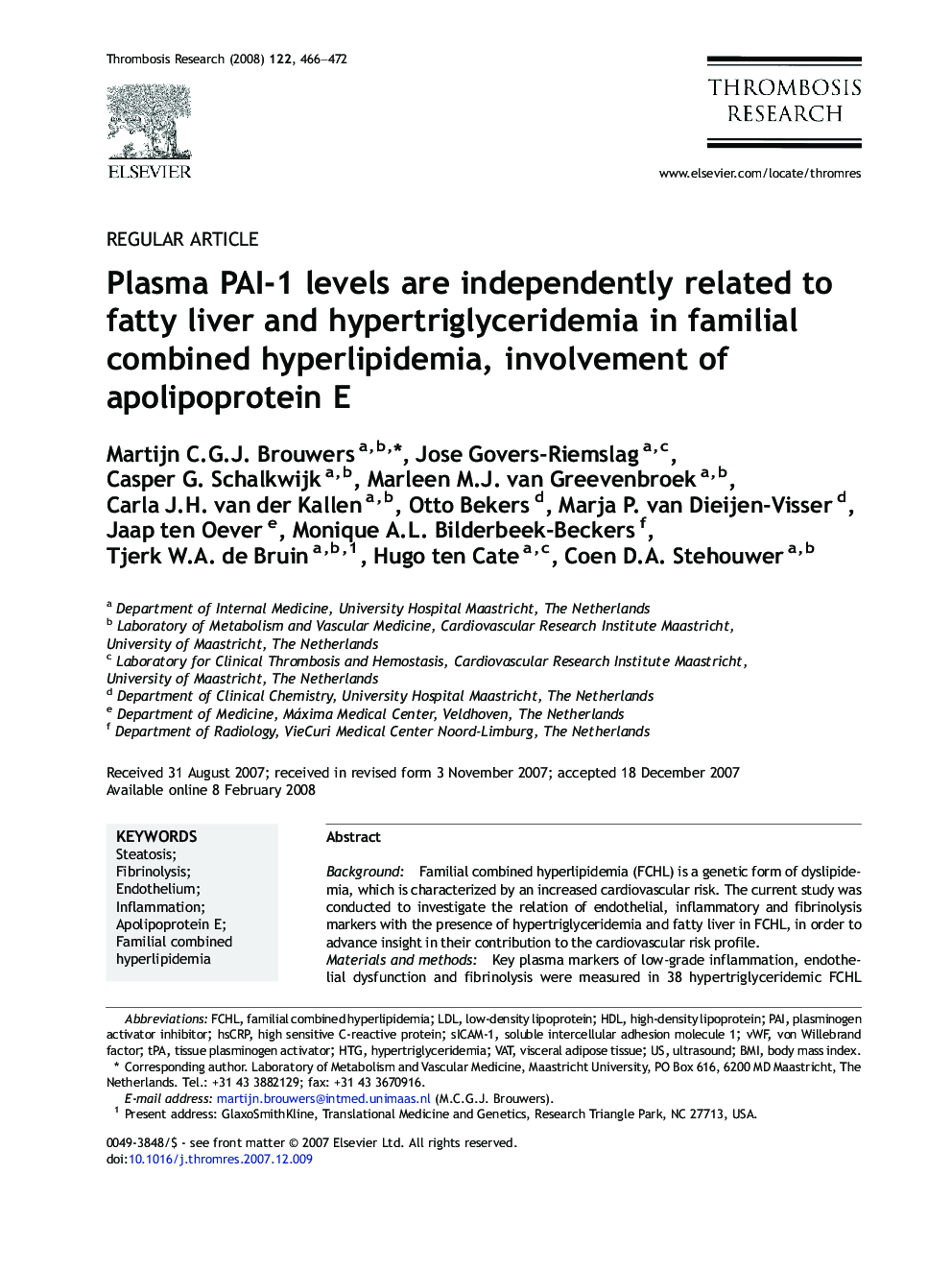| کد مقاله | کد نشریه | سال انتشار | مقاله انگلیسی | نسخه تمام متن |
|---|---|---|---|---|
| 3029470 | 1183078 | 2008 | 7 صفحه PDF | دانلود رایگان |

BackgroundFamilial combined hyperlipidemia (FCHL) is a genetic form of dyslipidemia, which is characterized by an increased cardiovascular risk. The current study was conducted to investigate the relation of endothelial, inflammatory and fibrinolysis markers with the presence of hypertriglyceridemia and fatty liver in FCHL, in order to advance insight in their contribution to the cardiovascular risk profile.Materials and methodsKey plasma markers of low-grade inflammation, endothelial dysfunction and fibrinolysis were measured in 38 hypertriglyceridemic FCHL patients and 38 age and sex-matched spouses. The presence of fatty liver was determined with ultrasound.ResultshsCRP, vWF, PAI-1, tPA and tPA/PAI-1 complex levels were significantly higher in hypertriglyceridemic FCHL patients compared to spouses (p < 0.05). Subsequent analyses revealed that these increased levels were confined to FCHL patients with the fatty liver phenotype (n = 25). Only PAI-1 and tPA levels were also elevated in the hypertriglyceridemic FCHL patients without fatty liver (n = 13). Of interest, 11 hypertriglyceridemic non-FCHL patients with the E2/E2 genotype displayed significantly lower PAI-1 levels when compared to the overall FCHL population (p = 0.001), implicating a role for apolipoprotein E in the relation of PAI-1 with plasma triglycerides.ConclusionMarkers of fibrinolysis were increased in all hypertriglyceridemic FCHL patients, whereas an increased state of endothelial dysfunction and inflammation was particularly observed in those hypertriglyceridemic FCHL patients who also have fatty liver. These results demonstrate the complex genesis of the unfavourable cardiovascular risk profile that is present in FCHL, and illustrate the potential risk of fatty liver above, and beyond hypertriglyceridemia per se.
Journal: Thrombosis Research - Volume 122, Issue 4, 2008, Pages 466–472